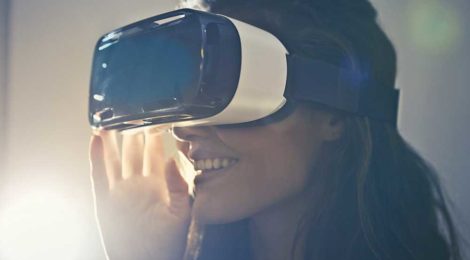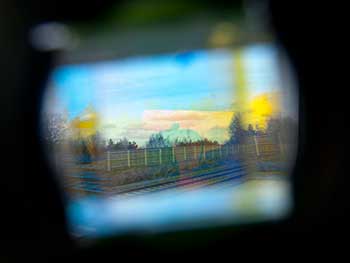
Simulated Environments Provide New Treatments for Mental Health Problems
For decades, virtual reality (VR) has primarily been a form of entertainment, with the first VR machine built to show short films that dazzled the viewer with sights, sounds and special effects. Today, VR is becoming increasingly affordable and has expanded its reach into other domains such as training professionals, including surgeons, soldiers and astronauts. In the last decade, VR and other simulation-based treatments have shown promise in supporting the development of many innovative methods of treatment.
Researchers from the University of Oxford recently implemented a VR project placing people with a fear of heights (acrophobia) in a 10-story office complex. Participants were presented with a series of tasks, from watching a safety barrier lower to walking onto a hanging platform. They were also asked to throw balls, play virtual instruments and rescue a cat from a tree. After six sessions, 70% of subjects were rated as no longer having acrophobia including many who had suffered from their fear for over 30 years. Similar results have been found in VR treatments for extreme fears of spiders and flying on planes.
One participant described how their experience in VR changed the way they think about heights:
“What I’m noticing is that in day-to-day life, I’m much less averse to edges, and steps, and heights, and I’m noticing that I’m able to say ‘Hello’ to the edge instead of bracing against it and backing up…I’m still getting a bit of a reaction to it, both in VR and outside as well, but it’s much more brief. I feel as if I’m making enormous progress, and feel very happy with what I’ve gained.”

Simulating situations without VR can be just as effective. At the University of Haifa in Israel, researchers developed a way for children with autism spectrum disorder (ASD) to learn public safety via a computer-generated road-crossing task. Children faced a monitor displaying their field of view and a character they controlled with buttons. With each level, more cars were added and faster speeds were introduced to increase difficulty.
After only one month of training, all six participants made major improvements at crossing the street. This was described in a 2008 publication:
“Ben (name changed) had been unable to behave appropriately on the road; he was diverted by stimuli in the environment…After the intervention process, an impressive change was seen in his pedestrian behaviour. Ben was now careful to stop on the sidewalk before going into the street, took care to look at the correct traffic light, crossed only on a green light, and did not delay while crossing”.
Floreo is a tech start-up that has integrated these skill-building modules for children with ASD into VR. This allows children to practice life skills and try different immersive scenarios in a safe environment.
For people with psychotic conditions, such new technologies have also facilitated the development of simulation therapy. About 60-70% of people with schizophrenia have auditory hallucinations, but the standard treatment of antipsychotic medication and talk therapy only has limited effectiveness. In searching for a solution, researchers at King’s College in London, England developed a new practice that simulates a conversation between patients and their voices.
This innovative approach has led to creating a realistic and immersive environment to facilitate safe interactions. The participant edits the avatar’s face and voice to be as close as possible to the hallucinations they experience. They then begin weekly conversations with the avatar, voiced by a therapist, but translated by a voice-changer. Over time, the therapist responds with less persecution, slowly concedes power to the subject and eventually acknowledges the participant’s strengths and capabilities.
After 6 months of conversation, subjects heard fewer voices and had fewer distressed reactions. Amazingly, eight of the subjects even stopped hearing voices completely. Joe (name changed) described his experience in the study:
“I found the sessions intimidating at times. It was like bringing my voices out into the open. Sitting in front of a computer, which seemed to know my every thought, in some ways, it allows me to share my experience, which can only be helpful.“

Simulated environments are a unique approach to treatment. They can provide an immersive, yet safe space to support therapy, with the potential to assist a wide range of individuals, as the technology continues to develop and become increasingly accessible.
-David Remisch, Contributing Writer
Image Credits:
Feature: Ryan Adams at Flickr, Creative Commons
First: Sebastian Dooris at Flickr, Public Domain
Second: siegertmarc at Wikimedia Commons, Creative Commons



